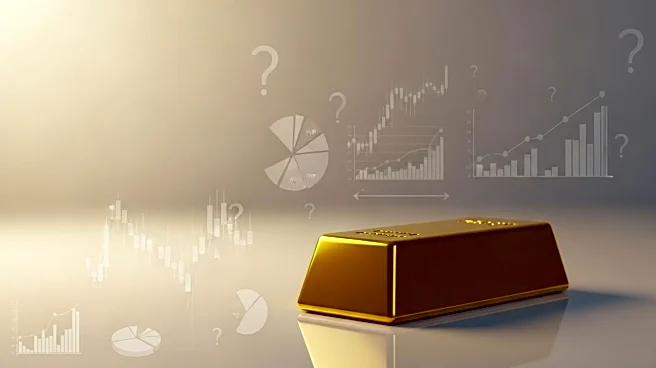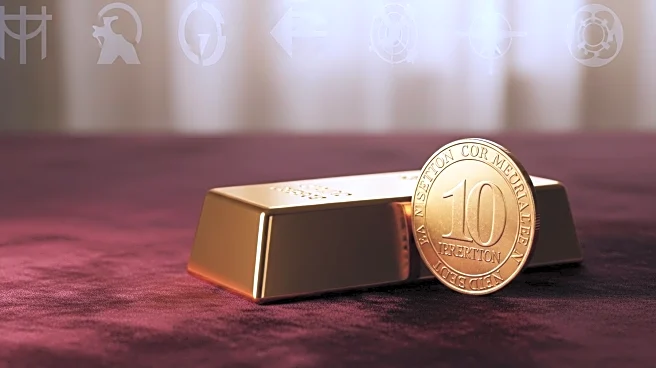What's Happening?
Gold prices have reached an unprecedented high of $4,000 per ounce, marking a 54% increase this year. This surge is attributed to economic uncertainty and a declining U.S. dollar, which has made gold more attractive to international buyers. China's central bank has been stockpiling gold, moving away from U.S. securities, further driving demand. Gold-backed exchange-traded funds (ETFs) have seen record investor buying, indicating a strong interest in gold as a diversification tool in investment portfolios.
Why It's Important?
The rise in gold prices reflects broader economic trends, including investor concerns about market volatility and currency fluctuations. As a traditional store of value, gold offers a hedge against economic instability, making it a popular choice during uncertain times. However, financial advisors caution against overinvesting in gold, suggesting a balanced approach to portfolio diversification. The increased demand for gold-backed ETFs highlights a shift in investment strategies, potentially impacting stock and bond markets.
What's Next?
Investors may continue to seek gold as a safe haven, especially if economic uncertainties persist. Financial advisors are likely to emphasize the importance of maintaining a diversified portfolio to mitigate risks associated with overexposure to any single asset class. The ongoing geopolitical and economic developments could further influence gold prices and investor behavior, prompting adjustments in investment strategies.
Beyond the Headlines
The surge in gold prices may have implications for global trade and monetary policies, particularly as countries like China reduce their reliance on U.S. securities. This shift could affect international relations and economic dynamics, potentially leading to changes in how nations manage their reserves and engage in trade.










